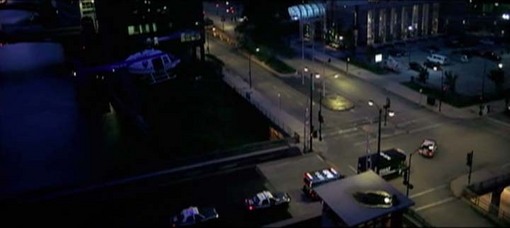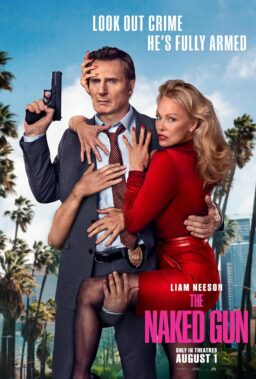We’ve been discussing (with regard to “In the Cut Part I: Shots in the Dark (Knight)” what kind of film grammar Christopher Nolan was using (it’s traditional narrative continuity editing — most of the time). One of my key questions was: Is it, “as the filmmakers have said, more concerned with realism — photographing real objects, including actors and miniatures, in real space? We can see how it does what it does. The question is: What’s the result? How do these stylistic choices enhance or diminish the impact of the movie?”
Just came across this 2005 interview with Nolan (by Sean Axmaker, for GreenCine), talking about his approach to reviving the Batman movie franchise. In a word? Realism, according to Nolan:
For me, the exciting opportunity was that you had a studio with this phenomenal character, wanting to re-introduce the character to the big screen and looking for a fresh way to do it. I felt I had never seen a superhero story tackled with a real degree of reality, of seriousness, in a way, and Batman, to me, as the most mortal, the most ordinary in terms of abilities, of superheroes — he has no super powers — he’s the natural choice for trying to tell a superhero story in a realistic manner. I just felt that would be something I’ve never seen before and something that would be really fun and exciting to do. […]
It presents enormous physical challenges for the crew, particularly because I insisted on doing things for real rather than employing visual effects, so there was a tremendous amount of stunt work and so forth. And I insisted on doing everything main unit, not using any second unit action crews. We wanted the whole film to have a consistency that applied to the action set pieces as well as to the character scenes.
Part II of “In the Cut” began with this quote from David Bordwell, which I think presents essential follow-up questions and considerations:
Realism, as usual, is simply a fig leaf for doing what you want. Virtually any technique can be justified as realistic according to some conception of what’s important in the scene. If you shoot the action cogently, with all the moves evident, that’s realistic because it shows you what’s ‘really’ happening. If you shoot it awkwardly, that presentation is ‘realistically’ reflecting what a participant perceives or feels. If you shoot it as ‘chaos’… — well, action feels chaotic when you’re in it, right? Forget the realist alibi. What do you want your sequence to do to the viewer?
And there’s the heart of the matter: Do the film’s techniques “make the chase more exciting, or just more confusing?” We can agree on what the film shows, but viewers have a range of opinions on how it affects them…











